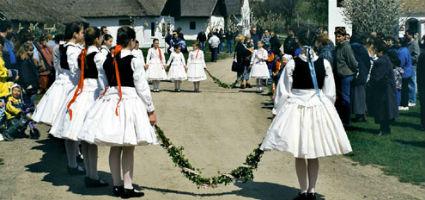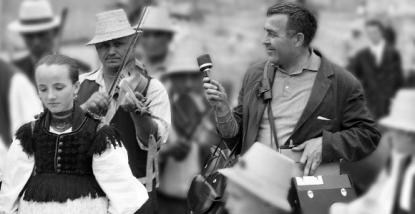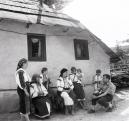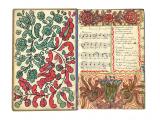2024. April 29. Monday
Hungarian Open Air Museum - Szentendre
 |
Address: 2000, Szentendre Sztaravodai út
Phone number: (26) 502-500, (26) 502-501
E-mail: latogato@sznm.hu
Opening hours: 01.11-27.03.: Sat-Sun 10-16
01.04-31.10.: Tue-Fri 9-17 12-13.11.: 9-18 |
The exhibition has closed for visitors.
2015.03.13. - 2015.09.13.
Museum tickets, service costs:
|
Ticket for adults
(in winter)
|
1000 HUF
|
|
|
Ticket for adults
(In opening hours)
|
700 HUF
|
|
|
Ticket for adults
(at times of the festivals)
|
1600 HUF
|
|
|
Ticket for students
(in winter)
|
500 HUF
|
|
|
Ticket for students
(in opening hours)
|
700 HUF
|
|
|
Ticket for students
(at times of the festivals)
|
800 HUF
|
|
|
Ticket for children
(in usual opening hours, for 2 or more children )
|
350 HUF
|
/ capita
|
|
Ticket for children
(at times of the festivals)
|
400 HUF
|
/ capita
|
|
Ticket for pensioners
(in winter)
|
500 HUF
|
|
|
Ticket for pensioners
(in opening hours)
|
700 HUF
|
|
|
Ticket for pensioners
(at times of the festivals)
|
800 HUF
|
|
|
Railway ticket
(when purchased on the train)
|
600 HUF
|
|
|
Railway ticket
(purchased at the cashier of the museum )
|
500 HUF
|
|
|
Railway ticket
(at times of the festivals)
|
500 HUF
|
What does it mean for a man when he is born onto the Road to Choose? The Road to Choose, in Transylvania, in a village not far from Cluj, where he inhales the love of mother tongue , music, dance , perseverance to the his people with every breath. Crossroads, figuratively, when you have to stand by preserving Hungarian folk culture, that is the issue.

Crossroads, this small Hungarian village, which became the cradle of two giant talents in 20 years, Albert Wass and Zoltán Kallós. The new temporary exhibition at the Open Air Museum follows Zoltán Kallós, the visitors will learned why known Moldavian folk songs are known, how those who initiated the dance house movement fell in love with folk music, how people reveal their pain through singing ballads and how an ethnographer, curator, teacher, folk musicians could become the hope of a community.
The visitors will not travel alone. Just as Zoltán Kallós has been accompanied at many of his field trips, the visitors to the exhibition will accompany Péter Kornis, Ferenc Sebő or György Martin as well.
Zoltán Kallós , who opened gates
The work of the ethnographer Zoltán Kallós - that was defined by Zoltán Kodály himself as Kallós profession - was not easy a slight bit. He received a Loewe Opta Dictaphone from Kodály for his work that was followed by a number of others since most of them were confiscated by the authorities. In spite of the obstacles, Zoltán Kallós alone collected more ballads that had done his predecessors earlier.
Zoltán Kallós did not visit strange lands on his field trips. He worked among those who he grew up with and those who visited him got to know Transylvania well.
Exhibition in Three Acts
The exhibition dealing with the life and work of Zoltán Kallós is presented in three acts.
The room at the entrance of the Open Air Museum, called the 'PontItt Room' is called 'With a Camera in Hand' where photos and short films show Zoltán Kallós .
The main part of the exhibition is located in the Open Air Museum Gallery, where in the form of time travel, using special items, enlivened by extraordinary stories, the visitors may get to know closer Transylvanian folk culture, existence in minority and also passion for research.
As the thirds element, the Upper Tisza Region transforms into a Dance barn which is a real dance studio. Here you can learn simple dance steps, individually or in the context of events by the help of dance instructors, as many do these days during summer camps named 'Crossroads'.

Crossroads, this small Hungarian village, which became the cradle of two giant talents in 20 years, Albert Wass and Zoltán Kallós. The new temporary exhibition at the Open Air Museum follows Zoltán Kallós, the visitors will learned why known Moldavian folk songs are known, how those who initiated the dance house movement fell in love with folk music, how people reveal their pain through singing ballads and how an ethnographer, curator, teacher, folk musicians could become the hope of a community.
The visitors will not travel alone. Just as Zoltán Kallós has been accompanied at many of his field trips, the visitors to the exhibition will accompany Péter Kornis, Ferenc Sebő or György Martin as well.
Zoltán Kallós , who opened gates
The work of the ethnographer Zoltán Kallós - that was defined by Zoltán Kodály himself as Kallós profession - was not easy a slight bit. He received a Loewe Opta Dictaphone from Kodály for his work that was followed by a number of others since most of them were confiscated by the authorities. In spite of the obstacles, Zoltán Kallós alone collected more ballads that had done his predecessors earlier.
Zoltán Kallós did not visit strange lands on his field trips. He worked among those who he grew up with and those who visited him got to know Transylvania well.
Exhibition in Three Acts
The exhibition dealing with the life and work of Zoltán Kallós is presented in three acts.
The room at the entrance of the Open Air Museum, called the 'PontItt Room' is called 'With a Camera in Hand' where photos and short films show Zoltán Kallós .
The main part of the exhibition is located in the Open Air Museum Gallery, where in the form of time travel, using special items, enlivened by extraordinary stories, the visitors may get to know closer Transylvanian folk culture, existence in minority and also passion for research.
As the thirds element, the Upper Tisza Region transforms into a Dance barn which is a real dance studio. Here you can learn simple dance steps, individually or in the context of events by the help of dance instructors, as many do these days during summer camps named 'Crossroads'.


